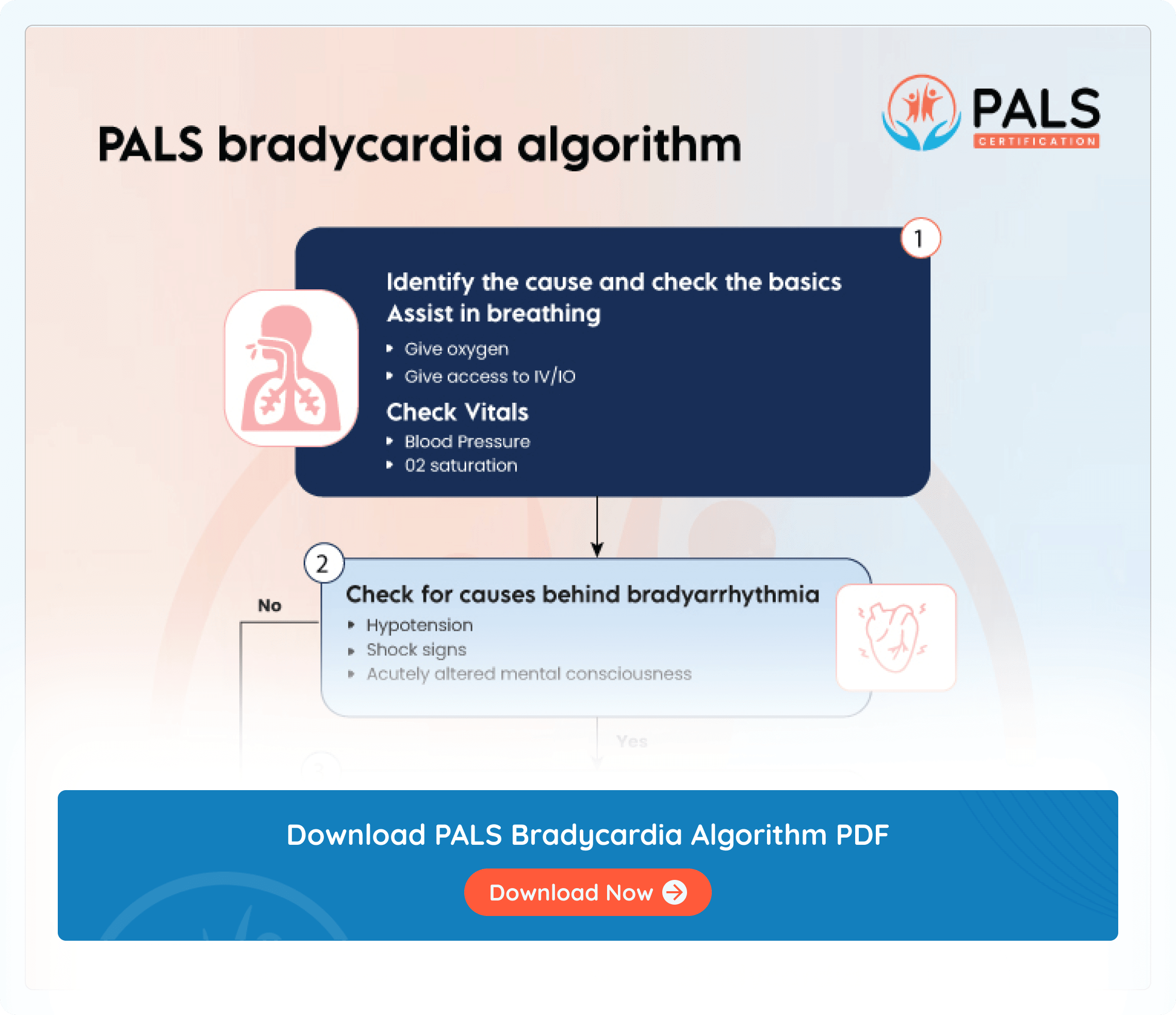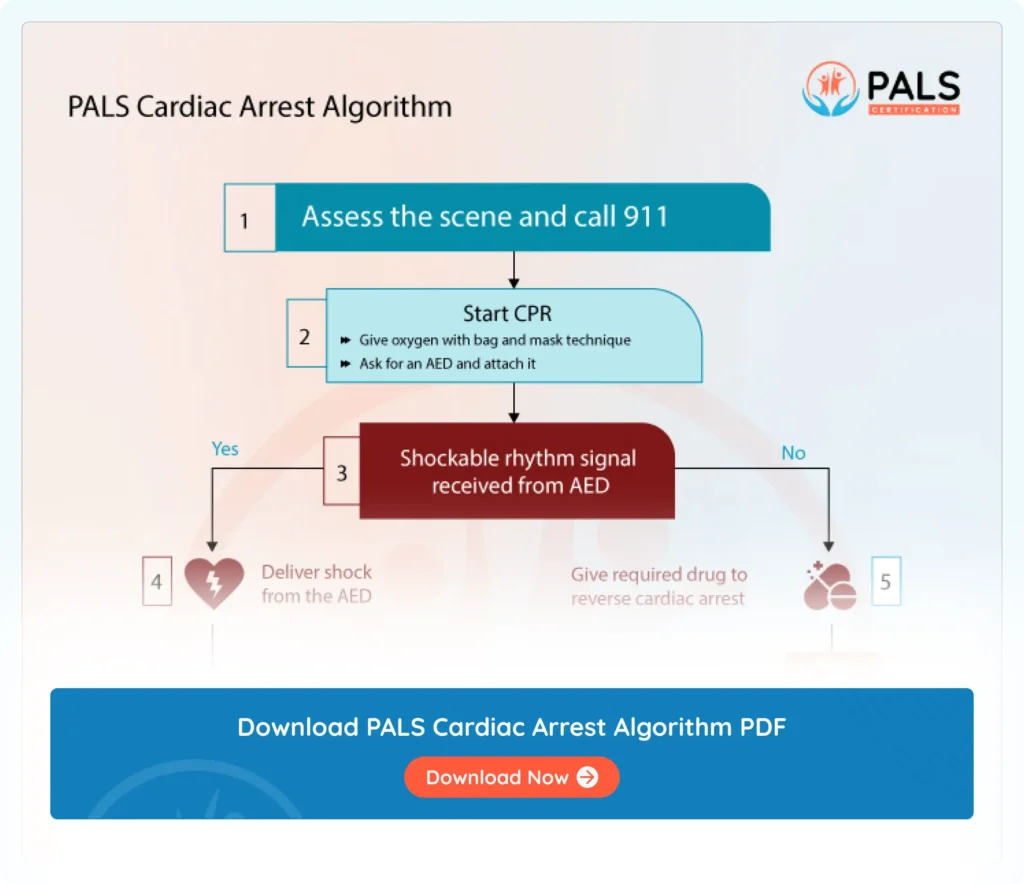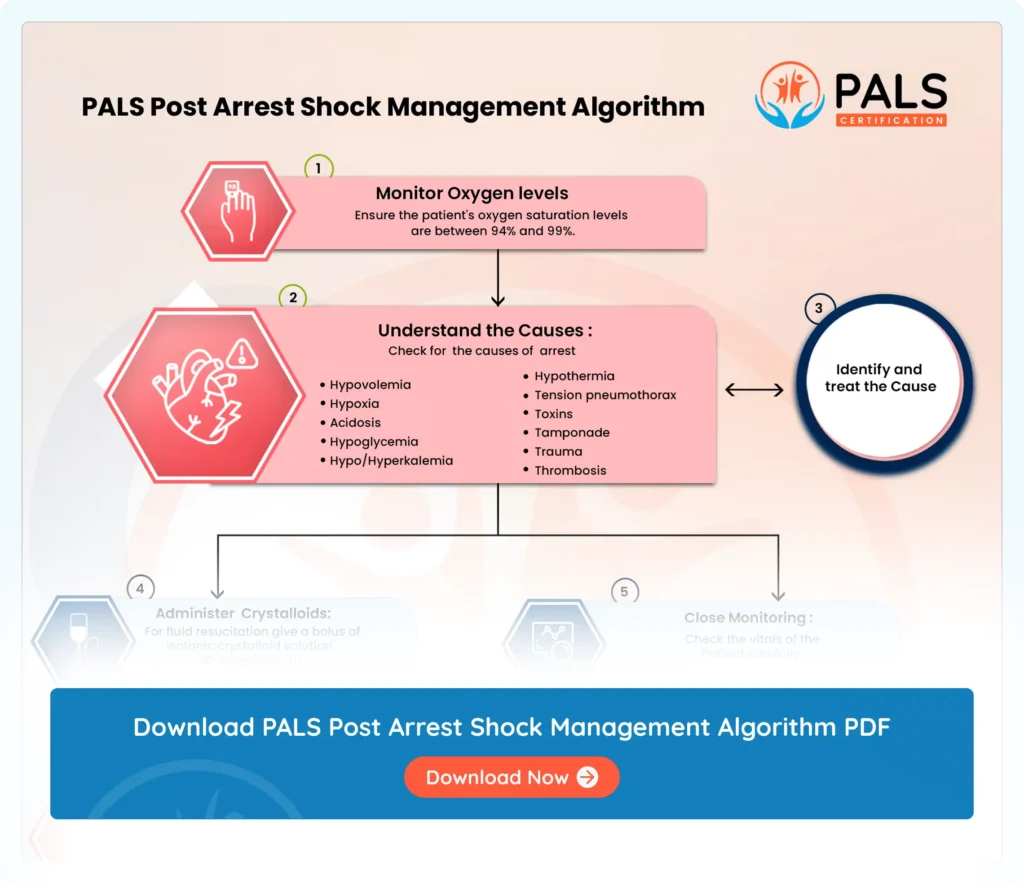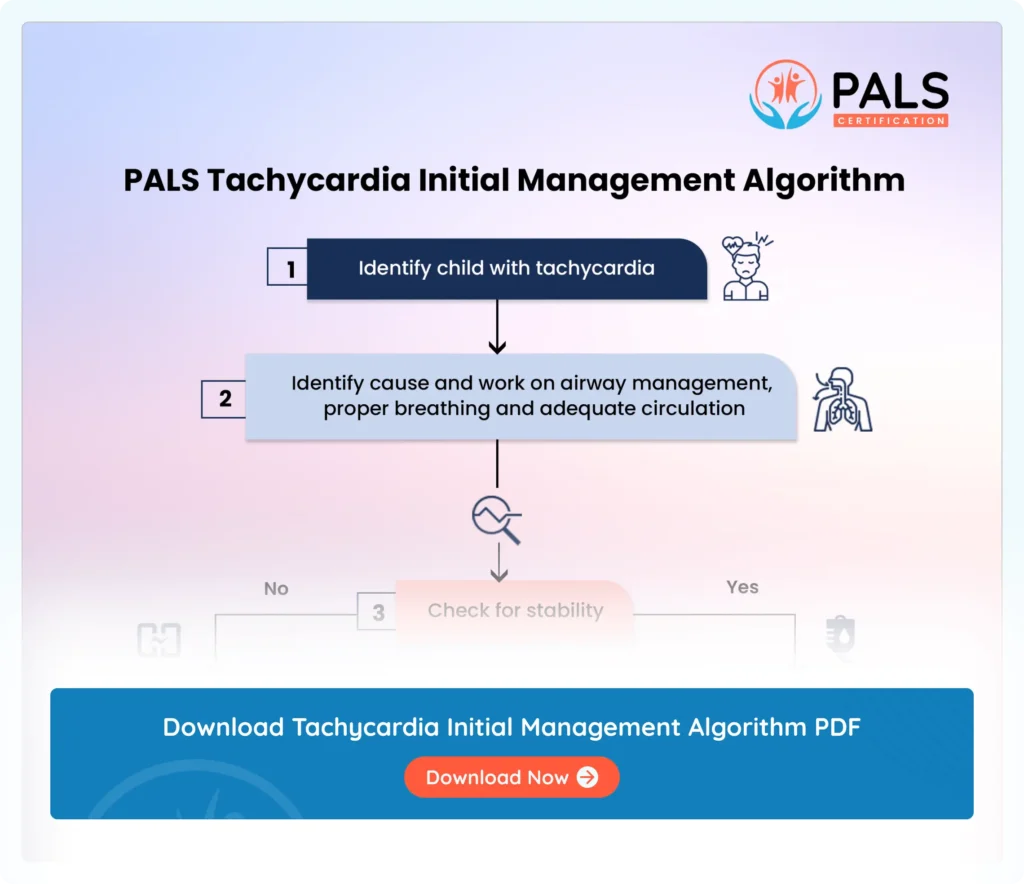- 4.0 - 8.0 CE Credit Hours
- For Pediatric Responders
- Includes Videos, Megacode Scenarios, Practice Tests & More
PALS involves assessing the need for intervention, implementing appropriate treatments such as oxygen, establishing IV access, and considering transcutaneous pacing if necessary.
The PALS Bradycardia Algorithm also addresses the systematic assessment and management of bradycardia, including identifying signs and symptoms and implementing appropriate interventions. The flowchart given below elaborates on the steps involved in assessing the need for intervention, implementing appropriate treatments such as oxygen, establishing IV access, and considering the use of medications like atropine and epinephrine to address bradycardia.

Online PALS certification and recertification
- Compliant with ECC and OSHA guidelines
- Nationally accepted course
- Available anytime, anywhere
- Earn CE credit hours
$119.00

Explanation of the flowchart
- Identify the cause and check the basics
- Assist in breathing
- provide oxygen
- Give access to IV/IO access
- Check Vitals
- BP
- Oxygen saturation
- Check for causes behind bradyarrhythmia
- Shock
- Hypotension
- Acutely altered mental consciousness
- If there are signs of inadequate perfusion or the heart rate is less than 60/min, initiate CPR and continue to monitor for signs of inadequate perfusion despite oxygenation.
- If bradycardia persists, continue with basic support to the patient, give oxygen, continue to monitor closely, and consider expert consultation.
- Administer medications as indicated
- Consider epinephrine (.01 mg/kg)
- IV/IO (0.1 ml/kg)
- Atropine (0.02 mg/kg) if the problem is primary AV block and repeat past 5 minutes
- If the patient develops pulseless arrest, start the Cardiac Arrest Algorithm.
The medication details provided indicate the dosages for epinephrine and atropine, which can be used in Step 5 if indicated.
Key components of the PALS cardiac arrest algorithm include
- Assessment and Initial Interventions (1)
The algorithm begins with an assessment of the patient’s condition and the implementation of initial interventions. This involves identifying and treating the underlying cause, maintaining airway patency, assisting breathing, providing oxygen, and establishing IV/IO access.
- Evaluation for Cardiopulmonary Compromise (2)
This involves thoroughly evaluating the patient for signs of cardiopulmonary compromises, such as hypotension, changes in the level of the patient’s consciousness, or other signs of shock.
- CPR and Perfusion Assessment (3)
In cases of inadequate perfusion or a heart rate less than 60/min, CPR should be initiated, and healthcare providers should continuously monitor for signs of inadequate perfusion while providing CPR.
- Persistent Bradycardia Management (4)
If bradycardia persists despite initial interventions, the algorithm recommends supporting the patient and seeking expert consultation.
- Medication Administration and Advanced Interventions (5)
Medications should be administered, such as epinephrine IV/IO or atropine if the issue is related to increasing vagal tone or primary AV block. Advanced interventions like transcutaneous pacing (TCP) or transvenous pacing (TVP) should also be considered while continuing to identify and treat the underlying cause.
- Transition to Cardiac Arrest Algorithm (6)
In the event that the patient develops pulseless arrest, healthcare providers should promptly transition to the Cardiac Arrest Algorithm to initiate appropriate interventions for managing cardiac arrest.
Available Courses
PALS Certification and Recertification Online
ACLS Certification and Recertification Online
- 4.0 - 8.0 CE Credit Hours
- For Healthcare Professionals
- Includes Videos, Megacode Scenarios, Practice Tests & More
$119.00 $169.00
Get CertificateBLS Certification and Recertification Online
- 6.0 CE Credit Hours
- For Medical Fields
- Includes CPR & First Aid Bag-Mask Techniques
$36.95 $39.90
Get CertificateSources
- Importance of airway assessment for patients requiring advanced airway management. https://www.ncbi.nlm.nih.gov/books/NBK470477/
- Understanding cardiopulmonary compromise in critically ill children https://www.ncbi.nlm.nih.gov/books/NBK436018/#:~:text=Unlike%20in%20adults%2C%20cardiopulmonary%20arrest,quality%20CPR%20can%20improve%20survival
- Bradycardia With Poor Perfusion and CPR https://www.ahajournals.org/doi/full/10.1161/circulationaha.110.971085
- Management of Symptomatic Bradycardia and Tachycardia https://www.ahajournals.org/doi/10.1161/CIRCULATIONAHA.105.166558
- Trends over time in drug administration during pediatric in-hospital cardiac arrest in the United States: Atropine https://www.sciencedirect.com/science/article/abs/pii/S030095722030530X
- What is pulseless cardiac arrest in children? https://www.ncbi.nlm.nih.gov/pmc/articles/PMC2938492/
All PALS Algorithms
Enroll in our PALS online certification course today and take advantage of our competitive pricing.

PALS Cardiac Arrest Algorithm
The PALS (Pediatric Advanced Life Support) algorithm is a standardized set of guidelines used in emergency medicine to manage pediatric cardiac arrest situations.

PALS Post Arrest Shock Management Algorithm
PALS Post Arrest Shock Management Algorithm outlines steps after ROSC for pediatric patients emphasizing critical interventions for stabilization

PALS Tachycardia Initial Management Algorithm
The PALS Tachycardia Initial Management Algorithm provides a systematic approach to assessing and treating pediatric tachycardia rhythms effectively.


